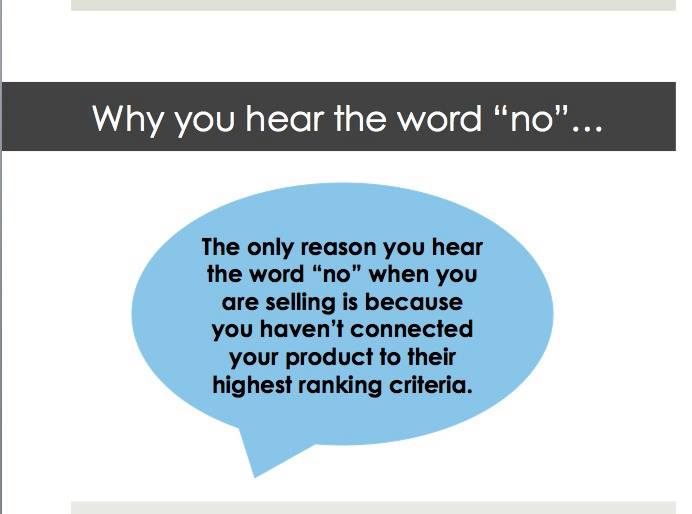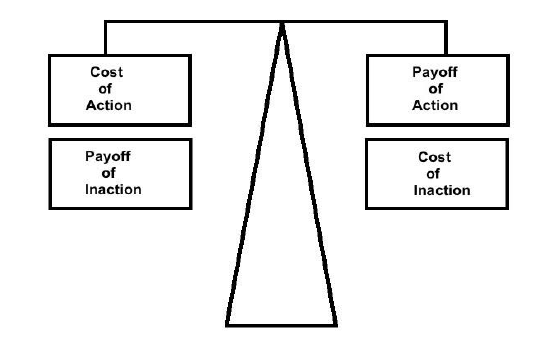[Read Part 1]
When people who should say yes to “you” say “no” instead, there is one overarching cause. Borrowing a few words (and an image) Dr. Harlan Kilstein shared someplace in cyberspace:
“The only reason you hear “no” when you are selling is because you haven’t connected your product to their highest ranking criteria.” Couldn’t’ve put it better myself — so I didn’t even try.
If what you’re offering doesn’t gain a position of ranking priority in your potential customer’s mind, you’re gonna hear a lot of nos. That shows up in a few different ways, one of which we discussed last week. We talked about how sales messages miss the mark if they don’t appeal specifically to the self-interest of the prospect.
Another reason people who should be your customers will reject you is because change is hard. When we’re selling our products and services, we’re asking people to
- change from inaction to action
- change from one course of action to another
- change brands or providers
- change their thinking
- change their habits
People generally do not like to change and we usually try to avoid it, even when we know the results will be good.
As the saying goes, we usually change our behavior when the pain of staying the same becomes greater than the pain of changing. And this is really the key to overcoming this reason people reject our selling messages.
Many times, we try to persuade tough prospects by piling on benefit after benefit and bonus after bonus. What we don’t realize is that the problem is not a lack of value (although extra value is rarely a bad thing). We oversimplify the persuasion process.
When people make decisions, they have to weigh multiple factors. As marketers, it is easy for us to only address two main categories: payoff of taking action and the cost of not taking action, i.e. the benefits they get from buying and what they miss out on if they don’t.
What we fail to consider is that, in the mind of the potential customer, there are HUGE benefits to inaction.
Changing is hard; your prospects most likely aren’t going to do it just because you offer a better alternative to what they’re doing now (which could be nothing). You’re going to have to paint the picture, taking into consideration the payoff of inaction and the cost of action.
Recognize that change is difficult for the prospect (just like it is for you). Acknowledge the fact, but put it in its proper perspective. “It feels good to smoke a cigarette when your coworker gets on your nerves, but is it worth shortening your life because he’s a jerk?”
The Cost of Truth
Sometimes we’re stuck in our ways. We like our way of doing things and seeing things. Even when we learn about a better way, we’re not trying to hear it. I was that way with the Dewey Decimal system. The Library of Congress classification traumatized me.
Speaking of books, how many book publishers, newspapers and magazines have gone bankrupt because they didn’t want to change along with the digital revolution?
“Everyone—yes, everyone—has an emotional attachment to their view, no matter how trivial. Some attachments are more easily severed than others. But they are still there.” ~ Abdu Murray
We have to realize that there’s more behind the “nos” we hear than a lack of value on our part. We have to explore ways to facilitate change.
Can that be done through marketing? Absolutely. We’ll get deeper into that in the future.
[Check out Part 3 now!]


